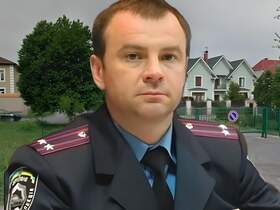Published a list of military specialties that are currently most needed in the Armed Forces of Ukraine

Published a list of military specialties that are currently most needed in the Armed Forces of Ukraine
Although Territorial Recruitment Centers (TRC) perform the main function in the mobilization process in Ukraine, the recruitment centers of the Armed Forces of Ukraine (AFU) remain the most effective.
They take into account both the real needs of the army and the preferences, skills, and civilian positions of conscripts.
Month to month differs, but the leaders in vacancies have already been determined
It is worth noting that current military specialties are, so to speak, a "variable" concept. Today they may be one thing, tomorrow another.
"The order is formed by the General Staff of the AFU, taking into account the real situation on the front. It depends on whether offensive or defensive actions are taking place. It depends on the direction — what the operational situation is at that moment. Even the season matters. Today it might be UAV operators, tomorrow machine gunners or sappers. And so on. Month to month differs," explains Fedir Venislavskyi, a member of the parliamentary Committee on National Security, Defence, and Intelligence.
However, at the end of the third year of the great war, it can be said that the most demanded military specialties in the AFU have emerged. According to the recruitment centers of the Ukrainian army, the top three most popular specialties include specialists working with unmanned aerial vehicles, drivers, and assault troops.
According to the Ministry of Defence, as of January 2025, the most popular specialties among servicemen joining the defense forces of Ukraine through army recruitment centers are as follows.
The most necessary military specialties
Specialties related to UAVs – 16%. This category includes drone operators, UAV engineers, and those who charge them.
"Of course, the operators are the key, but after completing a mission, a person comes back needing rest. During this time, the UAV should be checked, repaired if needed. And if it’s an FPV drone, it needs to be equipped again," says OBOZ.UA Sergeant Vadym Shevchuk, who served for some time in one of the regional TRCs.
Drivers – 16%. This includes not only drivers but also driver-mechanics and just mechanics. It is logical: if a vehicle is not operational, then even the driver is not that relevant. You have to get the vehicle running before you can drive anywhere. By the way, the driver’s license category doesn’t matter much here.
"If you have a category B license, they’ll give you anything, even an armored personnel carrier or a tank. Can you drive? Sit behind the wheel, you’ll learn the rest as you go," says Vadym Shevchuk.
Rifle specialties – 15%. This mainly includes assault troops. This category is quite large. It’s not just riflemen who handle an AK-47 (a skill all military personnel learn), but also snipers, machine gunners, and even grenade launcher operatives.
Staff positions – 9%. A maximum of 30% of military personnel are on the frontline. The rest are support services: supply, logistics, communication, medics, etc. And accounting is needed everywhere. It’s not just in our army (despite complaints about bureaucratization); this is how it is in all armies worldwide.
"Daily, I fill in combat operation logs: who went where, how much ammunition was expended. Reports from all types of supply — every canteen has to be accounted for. So there’s a lot of paperwork," says OBOZ.UA Senior Lieutenant Vyacheslav Konovalov, who was assigned as a management officer after being injured.
Artillery – 6%. Although former "gods of war" have yielded their rankings to UAVs, they remain relevant. This category includes all types of artillery – towed howitzers, self-propelled guns, MLRS, mortars.
Medical service – 5%. This group includes combat medics, paramedics, nurses, doctors. It’s worth noting that the usual term "nurse" here might not be quite correct.
"It’s more correct to say ’medical orderly.’ There are currently no more than 5% female nurses in the army," says the head of the medical service of Kyiv City Clinical Hospital No. 10, former military surgeon Danylo Mykhailov.
Communication and cybersecurity – 5%. Traditional communicators with a spool of wire on their back are a thing of the past. Modern military communication, based on the latest technologies, requires reliable management and protection of computer networks. This is probably one of the most high-tech military specialties now.
Currently, there are 48 army recruitment centers operating in Ukraine, offering over 10,000 vacancies in the Armed Forces of Ukraine, the National Guard, the State Border Service, and the Security Service of Ukraine. On average, about 1,200 people contact recruitment centers weekly.
Topics: TRCFedir VenislavskyiRecruitingAFU

Comments:
comments powered by DisqusЗагрузка...
Our polls
Show Poll results
Show all polls on the website











